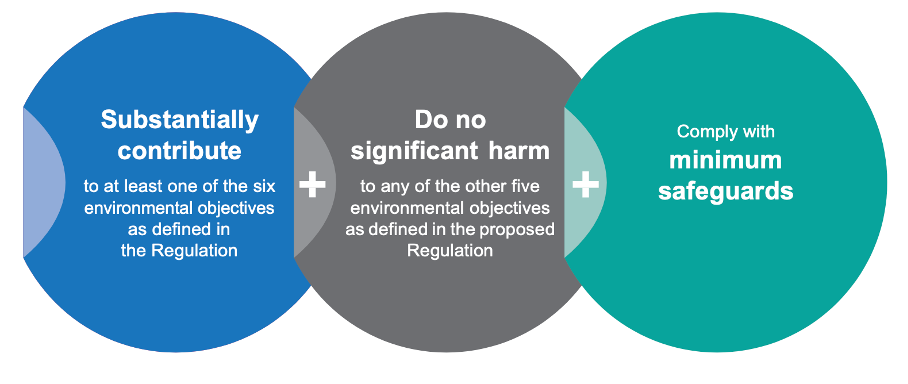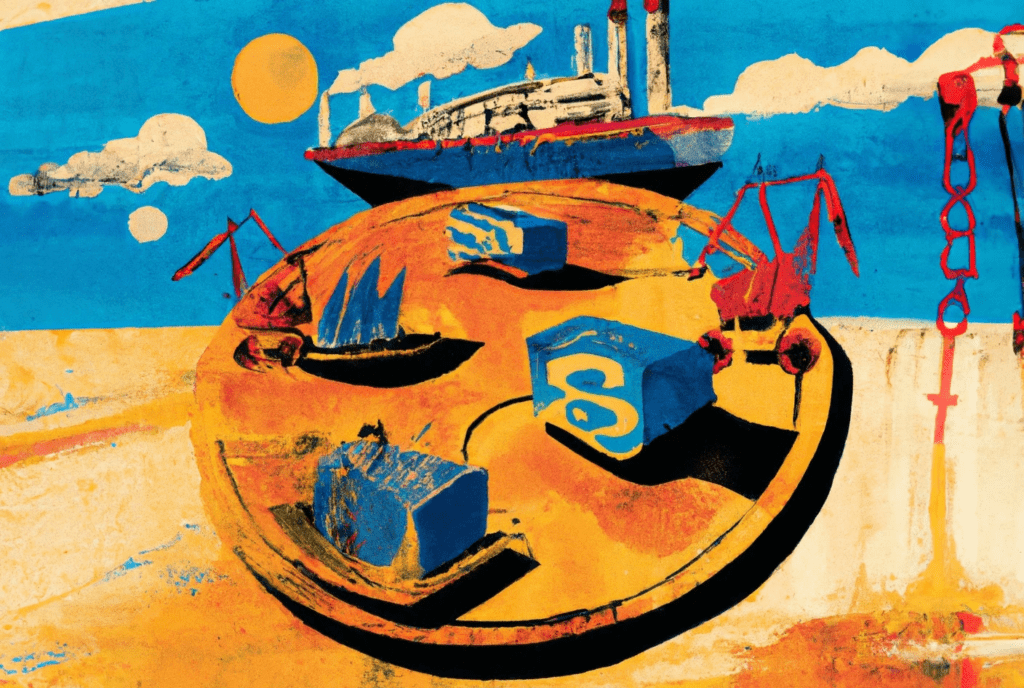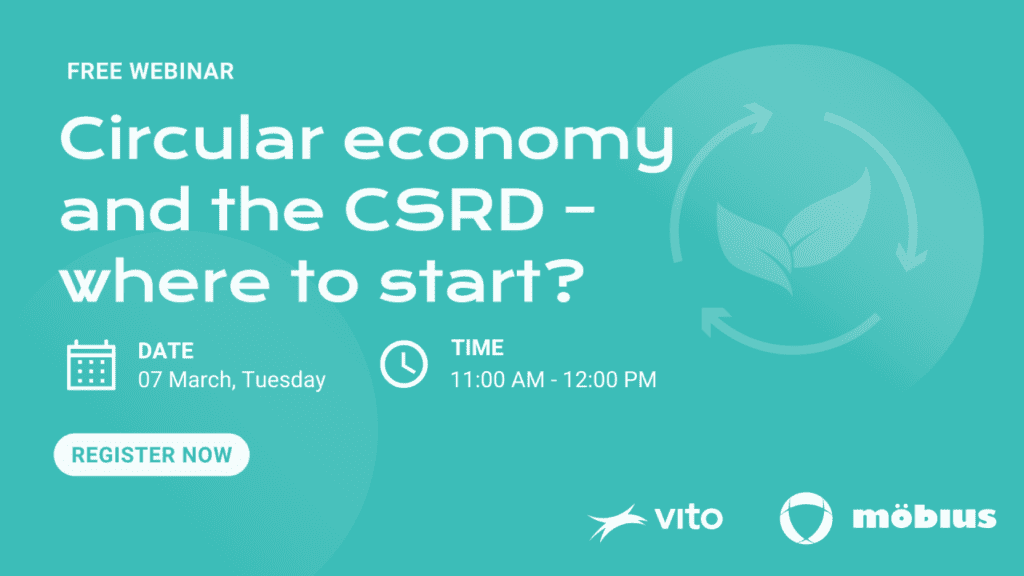The Corporate Sustainability Reporting Directive (CSRD) and Ports
How to accelerate the mobilization of capital to support the EU Green Deal objectives? This is the idea behind the Corporate Sustainability Reporting Directive (CSRD), into force since 5 January 2023. The European Union put into place mandatory disclosure on environmental performance and new instruments to do so. The goal is to have comparable reports and substantial contributions to objectives. What is relevant for port communities?
The Corporate Sustainability Reporting Directive (CSRD)
The European Union made new instruments available for mandatory disclosure on environmental objectives, among them the Corporate Sustainability Reporting Directive (CSRD) and the EU Taxonomy.
The CSRD addresses two types of reporters: financial companies (financial market participants who offer financial products in the EU) and non-financial companies.
Under the CSRD, companies are required to perform a double materiality analysis: a materiality of financial risk and a materiality of impact. They will have to analyse the risks (and opportunities) on their activities arising from climate change, and the impact of their activities on the climate.
The new directive adds an assurance requirement: reporting under CSRD must be verified by an independent assurance service provider.
Under the CSRD, companies will have to analyse the risks (and opportunities) on their activities arising from climate change, and the impact of their activities on the climate.
Gradual Roll-Out (2024-2028)
The CSRD follows up on the NFRD directive (2014). Roll-out will be gradual. It will expand the scope of companies, so that the number of reporters is expected to increase from 11,600 (the scope of NFRD) to 49,000 (the scope of CSRD).
| Reporting Company | Apply rules in Financial Year | Reports published in Financial Year |
| Large companies and parent companies of large groups already under the scope of NFRD | 2024 | 2025 |
| Other large companies or parent companies of large groups | 2025 | 2026 |
| SMEs | 2026 | 2027 |
| Non-EU companies | 2028 | 2029 |
Mandatory Disclosure
The NFRD provided guidelines for non-binding disclosure on non-financial information. Under the CSRD, disclosure is binding, according to rules defined in the Taxonomy Regulation. Companies will report by making use of a practical instrument: the EU Taxonomy. Assessments will typically be the work of a company’s legal department based on turnover and expenditures. This information will no longer be referred to as ‘non-financial’. It will be a dedicated section in the consolidated management report which shall be submitted in a single electronic reporting format.
The EU Taxonomy
Just as the Circular Port Monitor with 12 indicators was developed to make monitoring the circular economy in ports feasible, the Union wants a first-in-class tool that creates a common language and that makes Sustainability Reporting clear and applicable.
The EU Taxonomy offers both a classification of main activities (with NACE codes) and technical screening criteria (performance thresholds) for these activities to evaluate whether they are sustainable.
Scope
The main activities are said to integrate and align with sectoral policies and to have a higher level of ambition than sectoral legislation. However, sector-specific standards are in preparation and will be included later.
Activities should be carried out in alignment with existing frameworks (OECD, UN ILO).
Environmental Objectives
A company’s performance is evaluated over six environmental objectives: climate change mitigation, climate change adaptation, the sustainable use of water and marine resources, the transition to a circular economy, pollution prevention and control, the protection and restoration of biodiversity and ecosystems. For the first two climate objectives, a first set of screening criteria is underway.
Taxonomy Alignment for Activities
The Taxonomy Report: Technical Annex is a good starting point for companies to put this into practice. These criteria relate to the first two objectives: climate change mitigation and adaptation. About their economic activities, companies need to say how they:
- Make a ‘substantial contribution’ to one of the six objectives, for instance to the first two objectives of climate mitigation and adaptation
- Do Not Cause Significant Harm (DNSH) to the other objectives
- Comply with minimum safeguards.

Technically speaking, the assessment will pronounce how taxonomy-aligned the economic activities are. Currently, company activities in the EU have a low percentage of alignment. Improvement measures can be taken in account if they are part of an implementation plan to meet the threshold. They also count but do not have to be part of such a plan if they are solutions for low-carbon technology or building efficiency and best in class. The goal is to increase this percentage.
The EU sees this standard setting as dynamic. So far, only those activities have been listed for which technical screening data are available. The Taxonomy is a work in progress. The reporting instruments will receive an update when necessary. Stakeholders can also notify the EU about what needs to be included in the EU Taxonomy.
Main Activities in Ports
The following main activities with a relevance to ports are listed in the EU Taxonomy: several types of Manufacturing (cement, iron or steel, hydrogen, chemicals, plastics); Electricity, gas, steam and air conditioning supply; Water, sewerage, waste and remediation, Transportation and storage; Engineering activities towards climate adaptation (for example, machinery, industrial processes and industrial plant).
The EU Taxonomy also recognizes two other types of activities: Transitional Activities (for instance “best-in-class” towards low carbon alternatives) and Enabling Activities (for instance installation of energy efficiency equipment). A “substantial contribution” can be made based on Own Performance (manufacturing processes) or an Enabling Activity. This becomes clear in the Technical Annex.
Calculating Footprints
The EU Taxonomy offers criteria for a substantial contribution to the EU Green Deal objectives. These criteria will cover GHG accounting objectives and offsetting standards. A substantial contribution as defined in the EU Taxonomy is based on emissions data (Scope 1, 2, 3).
At best, such data cover the entire value chain. Scope 3 emissions become important. Emissions of Scope 3 refer to value chain emissions or emissions not owned by who reports but which are Scope 1 or 2 emissions of another entity. Transport and storage fall under emissions of Scope 1 but can return as Scope 3 for other activities or another sector.
GHG emissions are of particular interest to stakeholders. Companies will have to get information from suppliers, but up to a workable level. The Union will excuse that this information needs to come from very small entities.
Advantages
With the CSRD and the EU Taxonomy, the EU creates a common language on how companies report on their economic activities. The Union provided the criteria with comparability in mind. Without comparability of data, sustainability reporting is more liable to greenwashing. Financial market participants are spurred by stakeholders with acute ecological concerns. They also become attentive when good reputations can be made. Disclosure by way of a clear and practical tool provides them with a lens to make better decisions and to mobilize capital in the right direction.
Importance of Standard Setting
Sustainability reporting has become a market, but standards are still in development. So far, companies have reported on sustainability performance by way of frameworks that coexist and not fully overlap, which makes it difficult to compare performance or benchmark competitors. So far, auditors give low credence to the environmental claims of companies. Any work on comparable standards can therefore make a substantial difference.
Academic practice on standards is still in evolution but can usefully contribute. When good working tools for CE Monitoring in ports were lacking, a research group took up the challenge to develop a set of indicators which helps with CE port monitoring. This also calculates a baseline and measures advances. Aware that a definitive framework for sustainability is not yet available, the EU now offers standards for calculation and screening that can make a difference. The EU Taxonomy has a wider scope than other frameworks.
Challenges
The CSDR still poses a few challenges. It will be costly. They will have to analyse and assess, assemble data in reports, mobilize assurance providers, and make provisions for newly found risks and impacts. They will incur implementation costs. They will probably have to map their emissions for the first time.
The Union is aware that by reporting under the CSRD, companies have a lot on their plate. It will take account of the difficulties that companies may encounter in gathering information. In the middle to long term, such costs will be offset. Improved activity and reputation may lead to lower capital costs (better lending options). Initial efforts will be rewarded in the long term.
Even though the assurance requirement will receive a thumbs up by financial market participants, it remains unclear (mainly to financial service providers) who is best equipped to help companies with mandatory disclosure under CSRD: auditors or consultants. Unsurprisingly, accounting firms who have dedicated teams at their disposal, such as the “big four”, are in pole position to assist with this disclosure.
First Do, Then Write
Mandatory sustainability reporting under the CSRD should not be scary. Just as the introduction of the CSRD will be gradual, the application of it by companies will be understood by the Union as a process.
At best, financial reporting becomes integrative and a company’s mission hybrid, as was said during a case presentation of sustainability reporting by the Belgian subsidiary of discounter Lidl. When tensions occur between objectives that they had become acquainted with, the Lidl workforce was encouraged to try to balance or solve them during daily operations. They would learn about sustainability by doing. The advice given to companies for sustainability reporting was similar: first do, then write.


